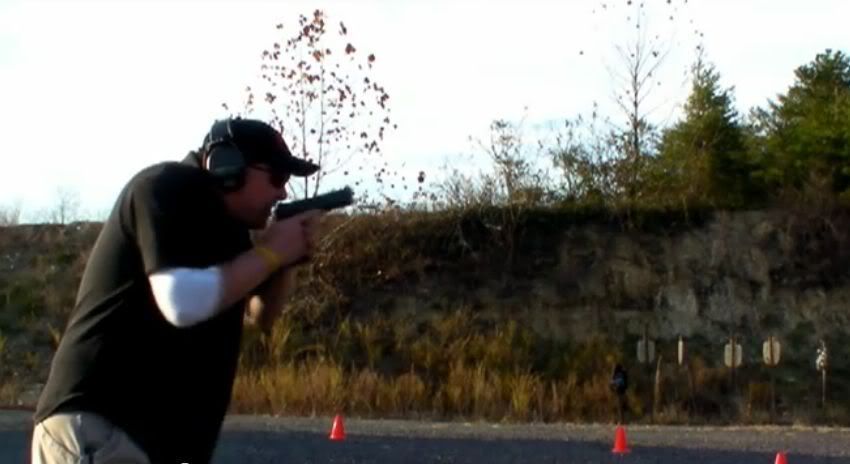I think it's interesting to note the argument presented against the index.
"Sure, it's a lot faster but it's not important to fighting in real life."
Sounds awfully similar to MT guys who aren't impressed with the fast times that iso shooters make, because "iso is for gaming and the speed isn't that important to fighting."
I'd just like to see more intelligent discourse, because iso shooters will retort about how the speed is important. So, guys, we can't really say, "Oh well a sub-3 FAST is cool but has no relevance to carrying a gun for self-defense" and then turn around the next day saying, "The speed gained from technique A is most definitely an advantage in fighting over technique B, because I can shoot the bad guy faster". The argument needs much more thought process and effort than
that.

SouthNarc does not teach the press-out from the #2 position. In the draw that SouthNarc teaches for the application of close combat, the #2 position is a retention shooting position and leads into the #3 position, which is a compressed ready position high on the chest. In the case of carrying AIWB, the #2 position is actually bypassed unless you need to shoot inside arms distance, whereas you hit it if you're carrying at/behind the hip.
SouthNarc also teaches the press-out for a different reason than Todd does. The application of the press-out that he teaches in ECQC is centered around making consistent high-center mass hits all the way from #3 to full extension. The application of the press-out that Todd teaches centers around getting the sights aligned as early as possible for high speed hits on low-probability targets. While related, there's a difference in
purpose between starting a press-out at the high-compressed ready/third eye/whatever, and the compressed ready at the sternum with techniques to hit accurately at 3 yards away even when still at the #3 and not aiming. Obviously they both share the characteristic of refining the sight picture on the way out to make consistent hits quickly, but they're not entirely the same and place emphasis on different factors.
) would be the most natural way to extend from that point.



 Reply With Quote
Reply With Quote






